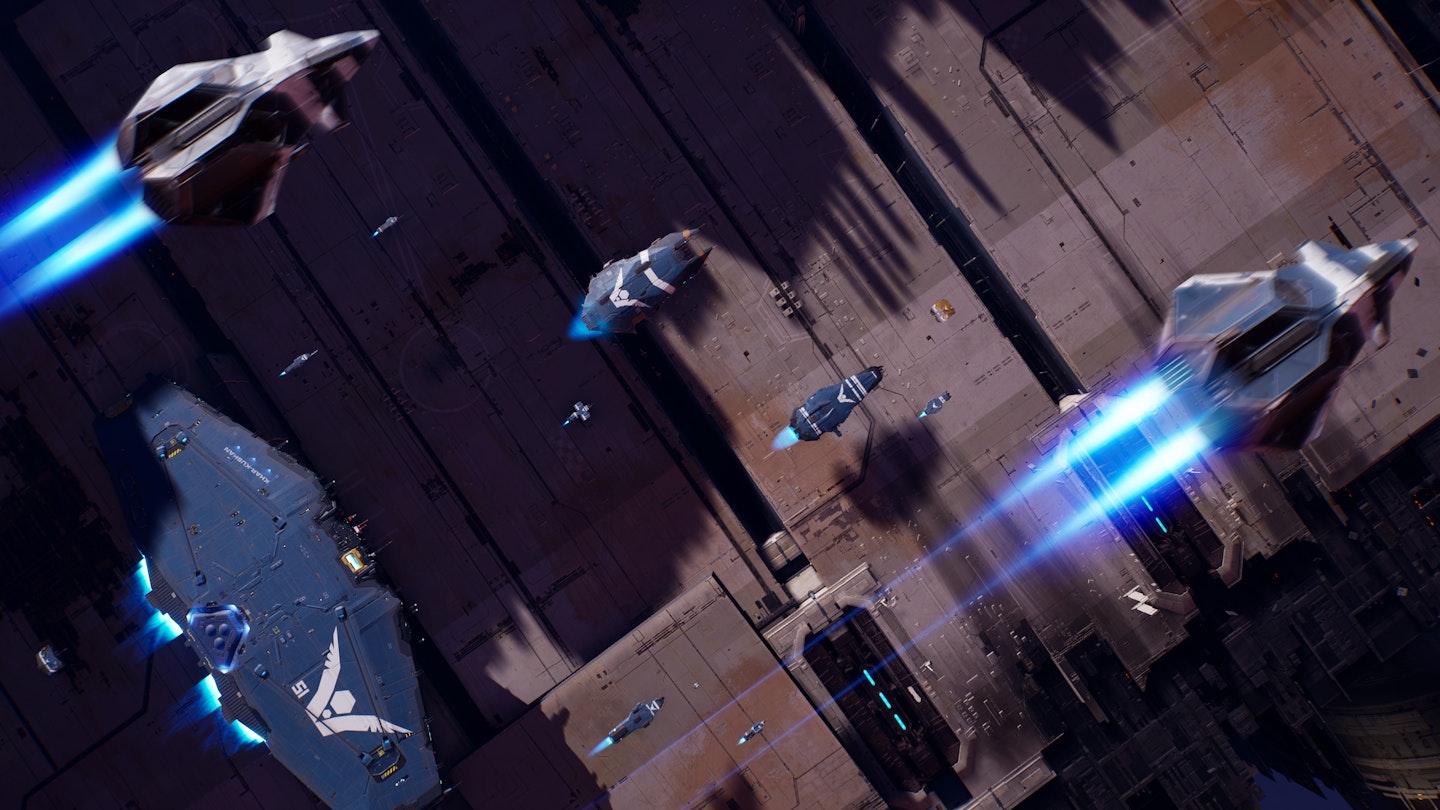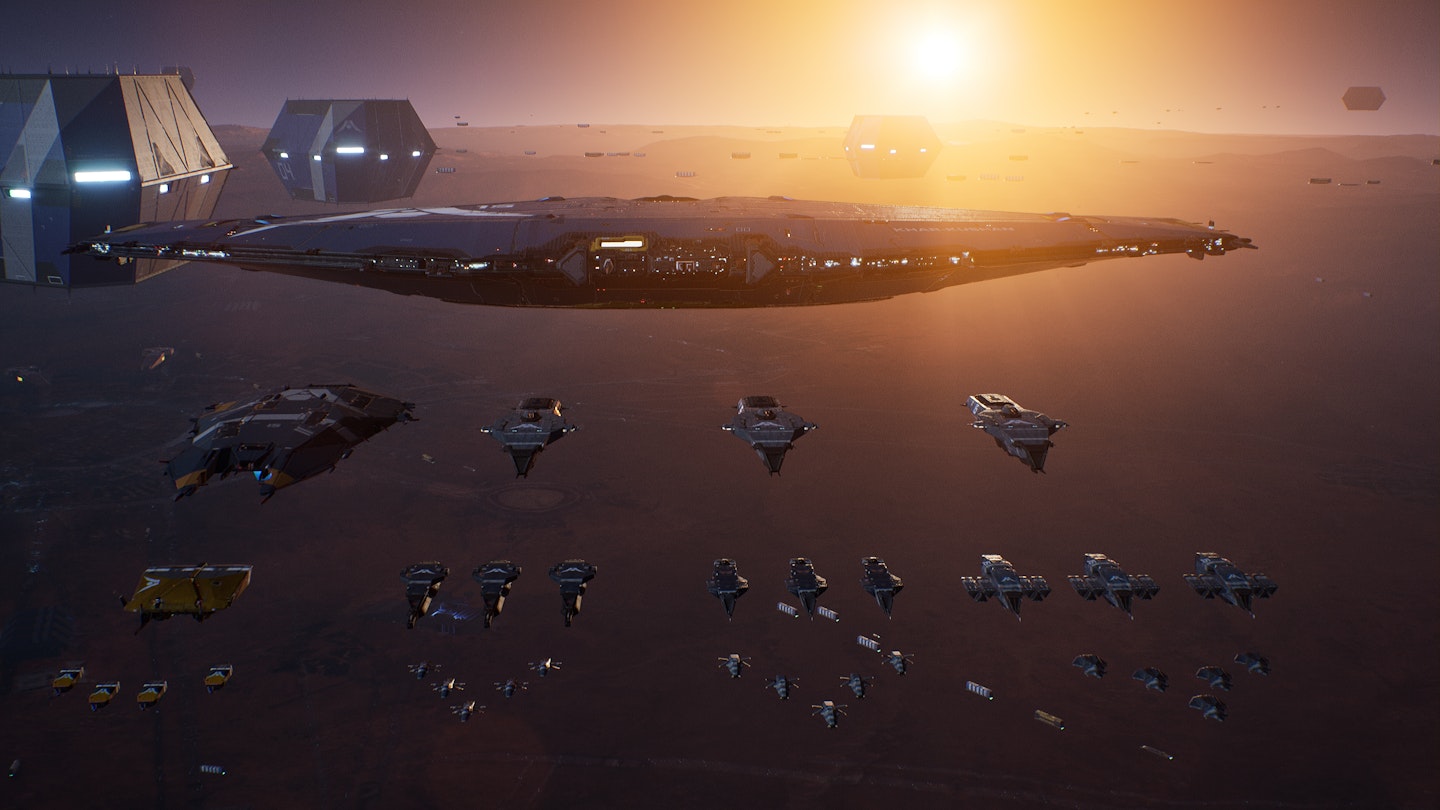Platform: PC
Strategy games are not always a genre synonymous with great storytelling. So when the original Homeworld crashed onto PCs in 1999, bringing with it an expansive, emotive and highly cinematic space opera about a lost people trying to find a home among the stars, it was a revelation. The seminal real-time strategy didn’t just bring new dimensions to its narrative, either, with a fully 3D environment that allowed you to attack foes from above and below, it was the first title to truly capture the feel of fleet-based tactical space combat.

One expansion, a disappointing sequel, a land-locked prequel, a remake, and 25 years of video game history later, we have the belated arrival Homeworld 3, a continuation of that story, updating this most lauded of RTS titles for the modern age. It once again puts you in command of an interstellar fleet and bids you launch vast armadas into battle against similarly numerous foes. Taking place some time after the events of Homeworld 2, this sees the once nomadic Hiigaran people now an interstellar empire, one facing a new enemy in messianic space cult The Incarnate. As Imogen S’Jet, a woman cybernetically integrated into the new Hiigaran mothership, you set off to determine the scale and scope of the threat.
Homeworld 3’s spectacle is everything we’ve come to expect from the franchise and more. From the moment your monstrous mothership (now horizontal, rather than the iconic vertical configuration of the original) sallies forth into to the vastness of space, it’s clear the series has lost none of its majesty. Distant stars twinkle against the inky expanse, the looming sphere of a planet here, the wispy cloud of a nebula there — all perfectly accented by the constant radio chatter of your ships and Paul Ruskay’s dreamlike score.
The closest thing to living out those Battlestar Galactica fantasies or recapturing the sheer scope of Star Wars’ epic space clashes.
As with previous titles, there’s a steady evolution to the space combat that makes up Homeworld’s core gameplay. You begin with fleets of recon scout ships and interceptors that weave in and out of enemy ships, blazing guns and luminous vapour trails making every dogfight an abstract work of art. As you steadily progress to corvettes, frigates and hulking capital ships, you’ll by necessity focus less on your one-man fighters and spend more time herding gargantuan steel colossi as they exchange sizzling ion beams and arcing torpedoes, enormous gun emplacements shuddering with recoil, shells crashing into enemy hulls. Zoom in and you’re right in the thick of it, pull back and conflicts takes on a quiet, almost serene aspect as overloading reactors flash silently in the dark and the blaze of distant weapons conjure images of what Blade Runner’s Roy Batty wistfully described in his final moments.
Combat comes down to a broad rock, paper, scissors dynamic — bombers pummel corvettes, corvettes shred interceptors, interceptors tear through bombers — but the sheer range of different vessels available mean that tactical options are extensive and a combined-arms approach, blending ships of many different sizes and classes, is the most consistent route to victory. Mission design has a slightly different flavour to previous entries, though, largely thanks to the introduction of huge, space-borne structures, which anchor many of the missions in a specific area, rather than simply dropping you into the big black. These hulking ‘megaliths’ provide still more visual interest and anchor your perspective, giving a sense of orientation — surprisingly helpful in a game that utilises all three dimensions of space. More importantly, they allow for a variety of new tactics, not only letting your ships use floating debris for cover, but allowing them to navigate trenches and tunnels, providing opportunity for flanking manoeuvres without being detected.

All of which provides for an iterative and refined implementation of the long-established Homeworld gameplay. But does the story hold up? Not quite. The narrative is as much an emotional journey for Imogen S’Jet, as she comes to terms with her nature as the sentient heart of the fleet, as it is a physical one across various systems, but it doesn’t have the simple-yet-powerful propulsion of the original, nor its emotional weight. More attention is given to lengthy cutscenes in a bid to bring character-led perspective to the zoomed out, broad-view gameplay, but there’s a hoariness here that puts it more on a par with previous sequels then the exemplary original.
However, while the single player campaign isn't the series high point in terms of emotional punch, it’s hard to fault the game much beyond that. The multiplayer skirmishes and the new co-op roguelike mode (where you fend off waves off assault, upgrading along the way) make for an enjoyable change of pace, and are set to receive faction updates down the line to maintain interest. Meanwhile, the new camera system, which lets you to control perspective directly, rather than anchoring it to specific ships, is a vast improvement, and the ability to issue move commands based on floating wreckage makes for far less fiddly navigation. While a few quality-of-life features from previous titles (unit veterancy status, pre-formed squadrons negating the need to micromanage fighters) are curiously absent, the net result is positive.
Homeworld remains the closest thing to living out those Battlestar Galactica fantasies or recapturing the sheer scope of Star Wars’ epic space clashes. While Homeworld 3 might not be the definitive entry in the series (2013’s Homeworld Remastered retains that honour), with its streamlined controls and vastly upgraded visuals, this is a more than worthy update to a timeless strategy classic.
